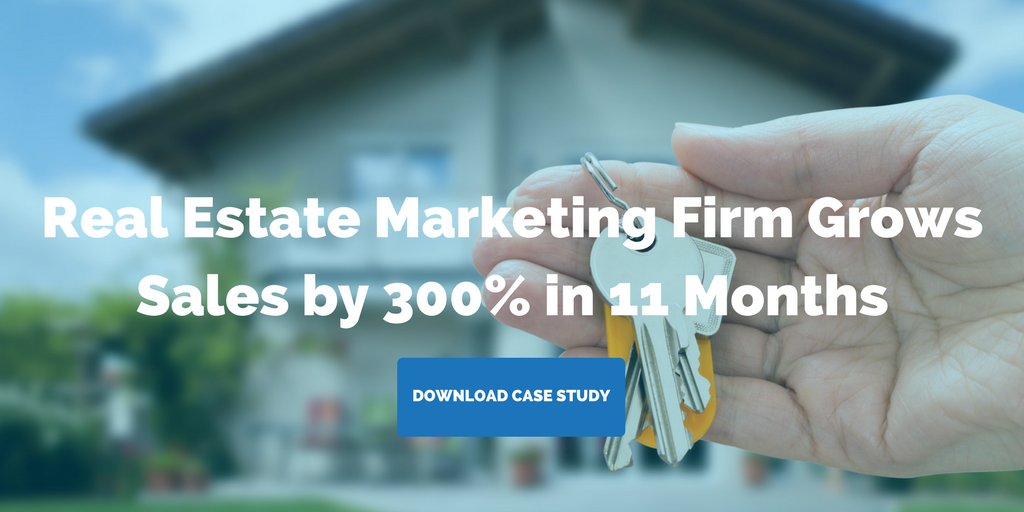Archive for the "Content Marketing" Category

6 Luxury Real Estate Trends to Keep an Eye On
From security and privacy measures to wellness amenities, here are six luxury real estate trends for marketers to take note of.
Smart home technology, high-level amenities, and emphasis on security — those are just some of the luxury real estate trends that will shape the market this year and beyond.
Here’s what you need to know, boiled down to a 5-minute read.
Overview of the luxury real estate market trends in Boston
The luxury real estate market is changing rapidly due to technology that allows for increased consumer mobility. More and more buyers are able to tour homes virtually, giving them access to properties around the clock. Affluent buyers have started to expand the ownership of property beyond their historical locations, branching into new areas and even across state lines.
And let’s not forgot about millennials. While Baby Boomers still possess more current wealth, younger buyers continue to grow tremendous spending potential. That is why they have become a crucial market segment for luxury real estate agents.
Luxury real estate trends to look for
Similar to other industries, the real estate world is driven by demand. In fact, the nationwide average selling price for luxury properties increased towards the end of 2018 despite increased mortgage rates. But several factors remain constant: the trends and features that come with high-end homes. Here are the most popular trends.
1. Smart homes
Connectivity and convenience go hand in hand in luxury real estate. A home equipped with the latest in digital technology is a statement of wealth and modernity. The smart home does not only benefit the environment but deliver financial benefits to the owner as well. For all the developments with smart locks, smart thermostats, and more, we are only seeing the beginning of the smart home revolution.
2. Advanced security
The affluent home buyers spare no expense to ensure their lives and items remain secure. From hiring architects who conceal houses to scraping their properties off the grid, this market segment invests heavily in security. And more advanced features and products will hit the market in the next few months.
3. Focus on privacy
In addition to security, buyers at this price point also value privacy — and they are willing to spend big bucks to achieve that sense of complete seclusion. If you acquire a home for $5 million, you do not expect it to be visible to neighbors or have anyone from the street walk to your front door. Buyers want homes with gates, hedges, and walls, but not that big chain link fence. Aesthetically pleasing privacy features add a different layer to it.
4. Guest suites
Most luxury buyers are embracing the trend of guest suites. The suite does not have to be detached. It can sit right off the garage downstairs or be equipped with an en-suite bathroom to be used by visiting family or friends, as well as the live-in maid or nanny. Buyers also prefer extra space and rooms for home offices, workout rooms, or a gym.
5. Swimming pools, particularly smaller ones
A pool is one of the key expectations in any luxury property. However, few people want the pool to take up the entire backyard. Instead, home buyers may opt for a smaller plunge pool or a “glorified jacuzzi.” With the construction of big homes on small lots, the trend makes perfect sense.
6. Amenity-rich homes
Customized libraries, wine cellars, yoga roof decks, serenity spaces — affluent buyers have moved beyond private gyms. And developers are responding accordingly, adding wellness amenities to new projects. Eco-friendly features have also begun to play a more significant role with buyers specifically searching for LEED–certified buildings.
What trends have you noticed in luxury real estate?
Related posts:
- Using Content Marketing to Market and Sell Luxury Real Estate
- The Role of Social Media in Luxury Real Estate Marketing
- 5 Luxury Real Estate Brands that Use Content Marketing to Sell Property
Archive for the "Content Marketing" Category

Marketing Trend: Marketing Automation for Real Estate
Real estate marketers can use marketing automation to drive efficiency and be more successful in earning and converting leads.
As your real estate brand grows, more and more tasks fall on your plate and digital marketing can seem daunting and time consuming. But marketers know the importance of a digital marketing strategy, so how to juggle these demands? The answer is automation.
HubSpot recently reported that businesses using marketing automation to nurture leads received a whopping 451% increase in qualified leads. So how can you reap these benefits? Let’s take a quick look at marketing automation for real estate.
What is marketing automation?
Marketing automation is the process of automating certain repetitive marketing tasks. It’s designed to support multiple channels, so your marketing efforts (and your brand) stay consistent across the board.
More and more people searching for apartments and condos are looking for a personalized experience. This makes marketers’ jobs increasingly more difficult as they have to produce relevant and informative content mixed with personalized messages. Marketing automation can help provide custom lead-nurturing content that helps convert prospects to buyers.
Examples of marketing automation for real estate
Automation can be used in a variety of ways throughout the buyer’s journey. Start with a documented strategy to outline exactly what outcome you’re hoping to produce. What do you want your marketing automation efforts to accomplish for your real estate brand? Top marketing goals for content marketers include converting contacts/leads to sales, growing website traffic, and increasing revenue.
After you identify your goals, you can find marketing automation tools that align. Here are some examples:
- Chatbots
- Social media scheduling tools
- Thank-you, welcome, and other triggered-by-an-event emails
- Event reminders
- Email workflows
Benefits of marketing automation
Save time
One of the most obvious benefits of marketing automation is saving time. Having the ability to schedule social posts, automate email workflows, and answer questions on your website via chatbot allows real estate marketers to stay relevant without sacrificing other responsibilities.
Build brand awareness
It’s important for customers to recognize your real estate brand. Brand awareness builds confidence in your properties and what you’re selling. Using marketing automation can get your brand in front of new audiences, as well as keep you on the forefront of prospects you’ve already engaged with. Through emails, social media posts, and paid advertising your brand can continue to build brand awareness while you’re focusing on other aspects of the business (or having lunch!).
Data-driven approach
Most marketing automation tools offer data to track your marketing efforts. This data can determine which marketing efforts are working and which aren’t. From workflow emails to push notifications, marketing automation software can streamline your strategies and make them more efficient.
Final Thoughts
Marketing automation can provide your leads with more personalized experiences. That will increase the chances that they’ll buy (or lease). But it won’t take up more of your time. In fact, it will free you up to provide value in other areas that can’t be automated (like content creation). It’s really a win-win.
Related posts:
- Real Estate Marketing Trend 2019: Influencer Marketing
- Our 6 Favorite Marketing Automation Tools for Real Estate Marketers
- How to Increase Leads with Chatbots
Archive for the "Content Marketing" Category

Top 5 Real Estate Marketing Tactics
Here are 5 real estate marketing tactics to increase website traffic, user engagement and leads.
As a real estate marketer, you’re always looking for ways to find more clients and grow your business. You already understand the need for a marketing strategy. But sometimes it’s challenging to identify the most effective marketing tactics to reach your audience.
The following are 5 real estate marketing tactics that are especially useful for engaging with prospects for luxury development projects.
1. Use AR and VR
Images are central to all types of digital marketing but they’re absolutely crucial when it comes to real estate. If you want to showcase the best of your luxury properties, it’s essential to display compelling, high-quality photos. You can make your imagery stand out even more by using the latest technology such as AR and VR.
It’s now possible to give prospects a virtual tour of your properties using virtual reality (VR) or augmented reality (AR). VentureBeat asks if such technology will mean the end of open houses. There’s still a lot to be said for giving people live tours of properties, of course. But VR and AR can give non-local prospects (or busy nearby ones) a great introduction to your luxury properties. Unless you’re experienced with photography, hiring a skilled real estate photographer can be a worthwhile investment.
2. Add Distinctive Features to Your Properties
Customers in the luxury real estate market like to see unique amenities that set a property apart from others. Quality photos are, for obvious reasons, the foundation of real estate marketing. As already noted, you can increase engagement by using creative and high-tech methods such as VR and AR. It also helps to have interesting and unique items to display in your photos (as well as videos).
Images of eye-catching details, decor, and amenities make your property memorable. Wellness amenities, for example, are quite popular in any type of luxury development. This includes yoga studios, meditation areas, tranquility-inducing artwork, and comfortable seating areas, off of which can be featured in your marketing. You can add many such elements without going to great trouble or expense. Repurpose existing spaces for a quick shot at little cost.
3. Use Postcards for Website Traffic
Real estate professionals generally focus on digital marketing today — and for good reason. Digital ads, your website, social media, and email are the most direct and economical ways to reach your audience. This doesn’t mean you should completely ignore traditional, offline methods. Direct mail, especially postcards, can be an effective tool to supplement your digital efforts. Postcards are highly visible and relatively cheap to send. You can use them to send prospects to your website.
4. Create Stories on Instagram or Facebook
The Stories feature on Instagram and Facebook lets you create targeted content for your luxury development prospects. This is spontaneous, short-lived content that your followers can see for 24 hours. You can use Stories to provide quick tours of properties, to discuss real estate trends, or to give advice to potential buyers or sellers. You can also create engaging polls and contests on Instagram and Facebook, and use Stories to promote them. If you want to amplify your reach, leverage paid advertising.
5. Tap Into the Power of Video Marketing
Videos are one of the best ways to reach your real estate prospects. People are consuming more and more videos, on YouTube, other video sharing sites such as Vimeo websites, and on social media. You can use videos to give tours of your properties or to discuss the real estate industry in general. There are several key benefits to video marketing for real estate. You can showcase properties, establish your credibility as an expert, and drive traffic to your website. Once you create a video, you can use it in multiple ways: upload it to YouTube, post it on your website, share it on social media, etc.
These are some of the best tactics to grow your luxury real estate business. And they all work even better in unison. A variety of methods build traffic and send prospects to the most appropriate place. Digital marketing is always evolving so it’s important to stay current with the very latest trends and tactics.
Related posts:
- Top 5 Real Estate Marketing Influencers
- The Role of Social Media in Luxury Real Estate Marketing
- 4 Real Estate Marketing Trends 2018
Archive for the "Content Marketing" Category

Marketing Real Estate on Social Media: 8 Best Ways to Get More Leads
How do you gain maximum exposure for your luxury brand? Here are 8 tips to boost your real estate social media strategy.
Did you know that 91% of marketers are looking for the best ways to engage their audience on social media? Real estate is a very competitive yet lucrative field, a fact that demands a real estate social media strategy. But only those who know how to utilize the best tools and strategies get results.
When it comes to shifting properties, the game is on another level. Local developers are moving towards visually appealing homes complete with a wide range of wellness amenities — and they let it all shine as part of their real estate social media strategy.
To move towards a positive step in luxury development, successful real estate marketers are using social media as the go-to strategy to get high quality leads. Want to know how to boost your real estate marketing game using social media?
Here are our top tips on how you can make your real estate social media strategy a success.
1. Have a unique social media profile
Do you think it is enough to open a social media account for your real estate company and fill the profile details in a hurry? Of course not. You need to optimize your profile and ensure it stands outs from the rest. You’d be surprised to find out that 79% of the people in the United States have a social media profile. So, while you will need to add relevant information related to your business, such as contact details and address, fill out the story section to make it clear which services you are offering.
2. Share luxury development content for local people
A vast number of people who will view your properties will most likely come from the same area where your real estate company is located. Therefore, it makes sense to focus on posting local content that will drive the locals to your social media platforms. Apart from posting content, you can also target local people by sharing local news, information related to the prices of local properties, and local events your company will be sponsoring. Make sure to share photos that are geotagged.
3. Add videos on your social media pages
YouTube is one of the top search engines for videos. In fact, 86% of home shoppers prefer to use video to get more information about properties. Besides, 52% of marketing professionals agree that video content tends to have the best return on investment (ROI). Uploading a video on social media could be the difference between a home buyer choosing your company or that of your competitor.
4. Use reviews to promote faster sales
Social media provides a platform for consumers to tell their truth about a specific service or products which then motivates other potential customers to take decisive action. Also, 62% of potential home buyers would go for a real estate company that was found online and had excellent reviews. To connect with your customers, share their success story, testimonials, or review on social media. You can even go further and offer an incentive to motivate people to leave a review.
5. Add hashtags to your content
Users on social media are looking to make a personal connection with the people behind the real estate marketing and not automated machines. Create social media content in advance to avoid last-minute rush and add hashtags that clearly shows how your luxury development is unique.
6. Engage with your followers to increase brand awareness
One of the best ways to attract internet users to your real estate company is to educate them and offer free advice. Posting information related to property listing at all times will make you look promotional. You can quickly build your brand and connect with people by giving them beneficial advice, such as the latest real estate marketing trends 2019. That way, people will view you as an expert in the industry and contact you for any inquiries.
7. Find local online communities
While Facebook is a great platform for finding and connecting with local communities, Instagram is one the fastest growing social media platforms with over 1 billion active users. You can use both platforms to build a community and start creating content for them.
8. Make use of Pinterest
People are likely to be more attracted to property listings with high-quality images. In fact, 87% of home buyers find photos of properties very useful in making an informed decision. Apart from social media, you can use Pinterest to pin visually appealing images to popular boards related to real estate.
What do you think will be the most important part of your real estate social media strategy?
Would you like someone else to do the job? We are here to help.
Related posts:
- 10 Social Media Statistics for Real Estate Marketers 2018
- Should I Be Using Facebook Carousel Ads?
- How to Use Social Media Hashtags in Real Estate Marketing
Archive for the "Content Marketing" Category

For More Creative Content, Break These 4 Rules
The best way to come up with engaging and creative content is to think outside the box and, sometimes, take risks. Here are 4 rules to break to produce truly creative content for real estate marketers.
Highlights:
- Produce creative content by throwing out the template approach and start thinking about what makes you stand out.
- Don’t be afraid to showcase what you do best through different avenues, like customer or vendor testimonials.
- When you’re committed to curiosity, you naturally become a learning organization and this learning leads to more creative content.
With over 4 million blog posts published every day, you have to be really creative to drive traffic to your website and attract prospective tenants or buyers to your properties. Marketers may think they need to follow these rules, but in fact, you need to break them to craft creative content.
1. Mirror competitors
While it’s true there might be trending topics that you will want to cover, you should think more about the value proposition of your specific property and put the focus there. This will help you write creative content that stands out from your competitors and is not repeating what “everyone else is doing.” Remember, your property is unique, so your content should be too.
2. Marketing mindset
While your marketing team knows everything about your property, some of the best stories and blog content come from your other teams. Existing residents or buyers, property managers, neighborhood vendors, and local businesses often have a really good prospective or story to tell. Tap into those unique stories for creative (and personalized!) content.
3. Keep it obvious
While there will definitely be some obvious things that stand out about your property that you’re going to want to highlight, sometimes the most creative content comes from a different perspective. For example, you may want to talk about events that are taking place near your property over the summer, like rock concerts, performance art, open-mic nights, or anything else that appeals to your buyer personas. Don’t be afraid to get specific and dig a little deeper; the result will be creative content that stands out to prospective tenants or buyers.
4. Repeat success
While it’s true you should look at the analytics and build upon content that has been successful in the past, you should also be taking some risks when you’re developing your content calendar. Build in a healthy mix of what’s worked for you in the past — what resonates with your target audience — and something new, out of left field. Real estate marketers need to keep experimenting. Audiences are constantly evolving, so your content should be too.
Have you published creative content by thinking outside the box? Have you been successful?
Related posts:
- 4 Types of Content You Need to Sell Real Estate (Besides Listings)
- Infographic: Content Marketing Statistics Every Real Estate Marketer Should Know
- 10 Quick Ways to Grow Brand Awareness
Archive for the "Content Marketing" Category

How Virtual Tours are Helping Real Estate Marketers Sell Properties
Virtual tours are making waves in the real estate industry as software takes staging and online tours to the next level
With online searches accounting for more than two thirds of the time that buyers devote to finding the right property, it’s essential for real estate marketers to adjust their efforts accordingly. But it takes more than a robust website and informative blog posts to get your properties sold.
The latest trend among digital marketers: virtual tours that offer prospects an actual inside look at your real estate listings from wherever they happen to be.
Virtual tours: the basics
Utilizing the newest technology, potential buyers are given the opportunity to leisurely explore your listing without ever stepping foot inside. Leads can take their time and truly get a sense of what it might be like to call your property home. The digital tool gives developers an opportunity to save money, time, and creates an opportunity for exponentially larger reach than traditional tours.
Why real estate marketers need to be creating virtual tours
Convenience
Purchasing a piece of real estate is a big decision and not one that is usually made overnight. Make searching for your properties convenient to potential buyers by showing them exactly what they can expect when they walk through the door.
Here’s sound advice from Quicken Loans:
“While there are a lot of companies and software out there that can help you create the most technologically-advanced virtual tour on the market, your main objective should be to create an online experience that is easy to navigate and does a good job showing off your home.”
Cost effective
Virtual tours can be elaborate 3D tours done by a production company or as simple as shooting video on your cellphone. Using available resources, like your mobile phone, allows real estate marketers to get their properties in front of prospects without a huge financial investment.
Stay ahead of the competition
Buyers who view properties with virtual tours are two times more likely to set up an actual tour. With numbers like that, it’s easy to see why real estate marketers need virtual tours to stay ahead of their competitors. Buyers have the opportunity to engage with your property, while learning more about your brand.
Virtual tours have exponential reach and longevity
As a marketer, you know that longevity is key in creating content. Virtual tours are a cost-effective, time–saving tool that can showcase your property for as long as it is available. Get the most out of your virtual tour by posting it to your website, write a tour-based blog post, and share it social media. The more visible your virtual tour is to prospects, the more organic reach you’ll gain. Reply to comments (positive and negative) and answer any questions that prospects may have. The more engagement a brand has with leads, the closer you are to closing a deal.
Final thoughts
Virtual tours are rapidly revolutionizing the real estate industry. It allows potential buyers to view your listing at their own convenience, anytime, anywhere. Have you tried posting a virtual tour of your property? We’d love to hear about your experience.
Related posts:





